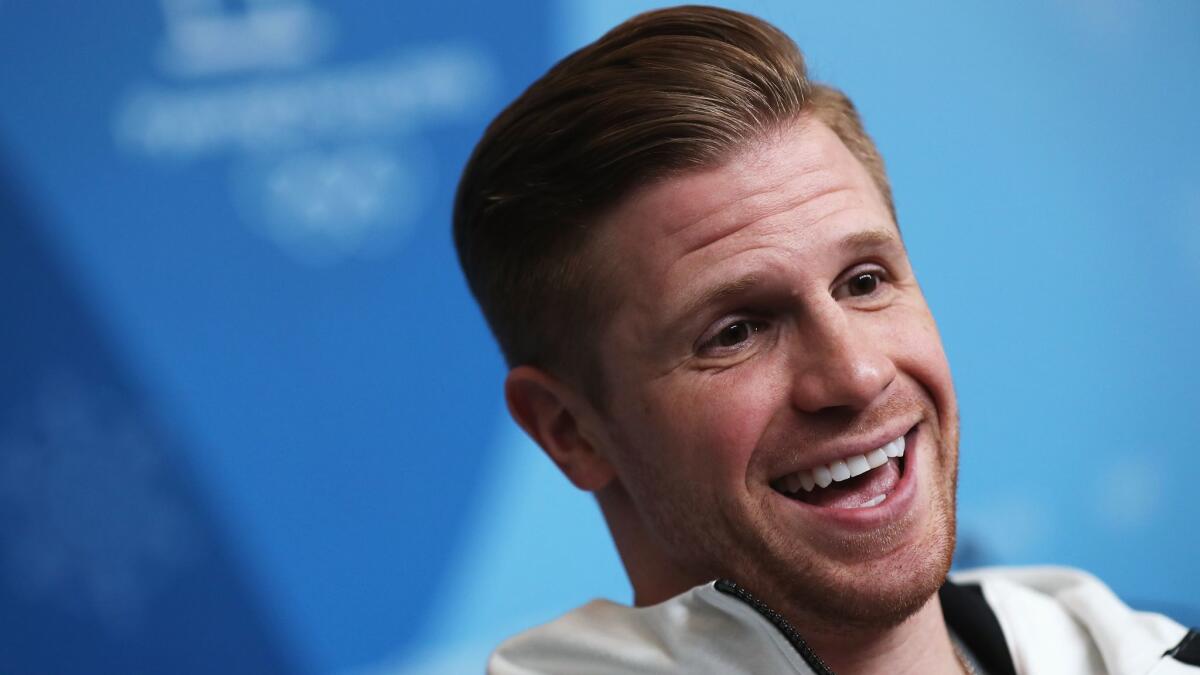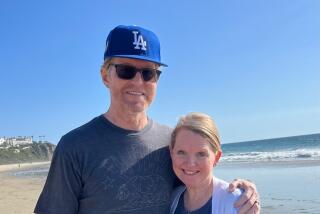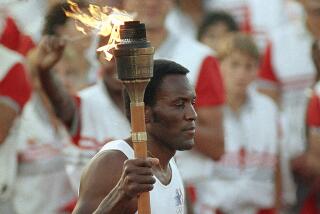Olympian John Daly traces rekindled love of skeleton to question on a first date

The question stumped John Daly.
Amid the usual first-date conversation at a Washington restaurant 15 months ago, the woman he met online asked what he was passionate about.
Daly didn’t have an answer. Nothing in his life matched the rush from plunging headfirst downhill at more than 80 mph in the skeleton. And nothing in his life matched the heartbreak he experienced from one of the most dangerous sports in the Winter Olympics.
“It was part of my past,” Daly said. “I thought I was going to leave it there.”
But the innocent question triggered his return to the sport he had walked away from and started the long journey to the Pyeongchang Games.
Daly is known for using the #PerfectHair hashtag on social media to tout his hair he once joked is “windproof, helmetproof and bulletproof” and making comedic videos.
“He’s like a big, mischievous child who will make you laugh as hard as he makes you worry,” said Jesse Lichtenberg, Daly’s agent.
Take a behind-the-scenes video Daly shot for Team USA.
“You’ve now witnessed a day in the life of the best-looking Winter Olympian,” he said.
Daly paused for a few seconds.
“Well, arguably the best-looking Winter Olympian.”
A different side emerged during the Sochi Olympics in 2014. He entered the fourth and final skeleton run in fourth place, four-hundredths of a second behind teammate Matt Antoine.
But Daly’s sled jerked out of the starting groove. He skidded back and forth and eventually crossed the finish line with his head buried in his hands. The disastrous race performance dropped him to 15th place.
After the race, his father, Jim, a retired New York firefighter, wiped away his son’s tears and offered a challenge.
“What happens here today will make you the man you are tomorrow,” the father said.
The words stuck with Daly, even as he quit the sport he loved. He felt defeated. He didn’t even hold a retirement party. Instead, the New York native moved to Washington. He sold medical equipment for Smith & Nephew’s ear, nose and throat division. He avoided competitive sports. His colleagues didn’t know he had competed in two Olympics. He wanted to be an average person. He wanted to move on.
The lone reminder of Daly’s other life was a box with race bibs in his bedroom. When co-workers asked about his past, he referenced a previous sales job. A salesman replaced the Olympian.
“You do something so long it becomes monotonous,” he said. “You’re not inspired to do it as much anymore. It becomes more of a job and less of a passion.”
In March 2016, Litchenberg floated the possibility of a comeback to Daly during a long meeting in an empty hotel bar in Washington. They hadn’t seen each other in two years. They talked through the final run and everything since. He realized he could return.
“We had a million conversations after it after that, nearly every day, discussed every tiny detail of if it could possibly work, how and if it was even realistic,” Lichtenberg said. “All of a sudden, the passion that he had so adamantly locked away kind of came floating back. I knew it was both scary and exciting for him.”
After that date in the D.C. restaurant, Daly quietly explored a comeback. He doesn’t usually fight nerves when racing, even rocketing through a course with his face an inch or two off the ice on a fiberglass and steel sled that resembles a cafeteria tray. But the return kindled the nerves. Uncertainty abounded. How much muscle memory remained after two years off?
The answer arrived during a discreet trip to the Olympic Training Center in Lake Placid, N.Y. On his first run, the sled drifted as he zoomed into a curve. He corrected without even thinking.
“I wanted to see if I sucked or not,” Daly said with characteristic bluntness.
Not long afterward, he posted a simple message on Instagram: “I never thought I’d say this but I’m back.” He added the hashtag: #StillHavePerfectHair.”
Daly kept working full-time and resumed sliding full-time. That decision came with a $1,000-a-month stipend from the U.S. Olympic Committee, hardly enough money to justify walking away from a good job.
The schedule wasn’t easy. He worked from 7 a.m. to 4 p.m., then trained for another three hours with frequent trips to Lake Placid on weekends. He started at the bottom of the U.S. rankings and climbed all the way to No. 2 last year.
The passion is back. The goal is simple. Daly wants to replace Sochi’s heartbreak with a more fitting end to his career.
“You have to want to be here,” he said. “That flame went out in Sochi for me. It wasn’t until that date that the embers started burning up again.”
The date didn’t work out. But Daly finally has an answer to the question.
Twitter: @nathanfenno
More to Read
Go beyond the scoreboard
Get the latest on L.A.'s teams in the daily Sports Report newsletter.
You may occasionally receive promotional content from the Los Angeles Times.







